From the Field-Agronomy Notes
go.ncsu.edu/readext?423528
en Español / em Português
El inglés es el idioma de control de esta página. En la medida en que haya algún conflicto entre la traducción al inglés y la traducción, el inglés prevalece.
Al hacer clic en el enlace de traducción se activa un servicio de traducción gratuito para convertir la página al español. Al igual que con cualquier traducción por Internet, la conversión no es sensible al contexto y puede que no traduzca el texto en su significado original. NC State Extension no garantiza la exactitud del texto traducido. Por favor, tenga en cuenta que algunas aplicaciones y/o servicios pueden no funcionar como se espera cuando se traducen.
Português
Inglês é o idioma de controle desta página. Na medida que haja algum conflito entre o texto original em Inglês e a tradução, o Inglês prevalece.
Ao clicar no link de tradução, um serviço gratuito de tradução será ativado para converter a página para o Português. Como em qualquer tradução pela internet, a conversão não é sensivel ao contexto e pode não ocorrer a tradução para o significado orginal. O serviço de Extensão da Carolina do Norte (NC State Extension) não garante a exatidão do texto traduzido. Por favor, observe que algumas funções ou serviços podem não funcionar como esperado após a tradução.
English
English is the controlling language of this page. To the extent there is any conflict between the English text and the translation, English controls.
Clicking on the translation link activates a free translation service to convert the page to Spanish. As with any Internet translation, the conversion is not context-sensitive and may not translate the text to its original meaning. NC State Extension does not guarantee the accuracy of the translated text. Please note that some applications and/or services may not function as expected when translated.
Collapse ▲Tobacco Research Update: Boron Deficiency of Tobacco
In this tobacco research update, we highlight the symptoms of boron deficiency. These images are part of a project supported by the North Carolina Tobacco Foundation to develop a web-based diagnostic key for the identification of nutrient disorders of tobacco.
Boron (B) deficiency is easily induced in tobacco plants and manifests as a variety of unique and interesting symptoms.
Tobacco that are B deficient are stunted very early on in production when compared to healthy plants. Initial symptoms involve a noticeable distortion at the growing point. The youngest leaves will develop kinks and other unusual growth patterns (Fig. 1). Additionally, the upper leaves will be very thick and brittle to the touch. It has a very distinct “ridged” feeling compared to healthy plants.
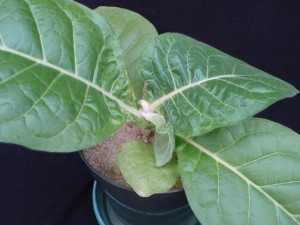
Figure 1. The initial symptoms of B deficiency involve a distortion of the terminal bud.
©2016 Forensic Floriculture
Symptoms progress very quickly once initial symptoms are observed. The distorted terminal bud will quickly become necrotic and may abscise from the plant. The older foliage will often become darker green in coloration and will also become distorted. The leaves will begin to curl downward and will take on a crinkled appearance (Fig. 2).
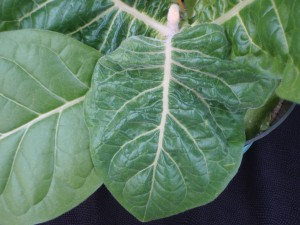
Figure 2. This crinkled leaf is a very common symptom of B deficiency that begins very quickly.
©2016 Forensic Floriculture
These symptoms may also be confused with calcium (Ca) deficiency, which is often accompanied by apical death and leaf distortion. The primary difference between these two deficiencies at this intermediate stage, is that Ca deficiency involves a downward curling of the leaf margins, while B deficiency involves a downward curling of the entire leaf. These differences become easier to distinguish as symptoms advance.
In advanced cases, plants are severely stunted, and the distortion of all of the foliage becomes very pronounced. The midrib of the leaves will develop perpendicular cracks that are typically closer to the main stem of the plant (Fig. 3).
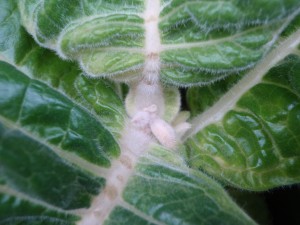
Figure 3. This cracking that occurs on the leaf midrib is another common symptom that may be seen in B deficient tobacco.
©2016 Forensic Floriculture
Other symptoms include a browning discoloration on the stem (Fig. 4), as well as a ribbed appearance and interveinal chlorosis (Fig. 5). Side shoots may also begin to develop due to the loss of the apical meristem and associated apical dominance. The extreme distortion of the foliage may be observed in the 360-degree image below (Fig. 6).
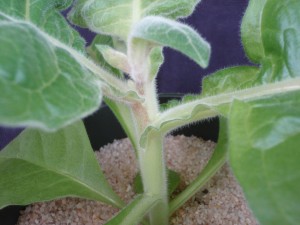
Figure 4. Brown spotting on the stem may also occur as B deficiency symptoms progress.
©2016 Forensic Floriculture
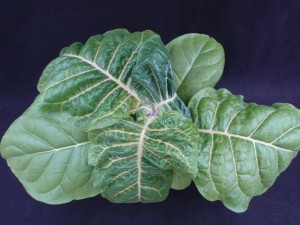
Figure 5. This ribbing will occur when leaf curling becomes very extreme, and the chlorosis is another symptom that occurs in advanced cases of B deficiency.
©2016 Forensic Floriculture
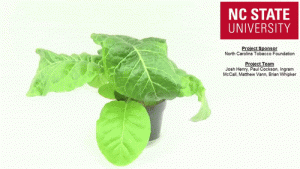
Figure 6. The 360-degree view of this symptomatic plant may be viewed by clicking on the above picture.
©2016 Forensic Floriculture
We would like to express our appreciation to the North Carolina Tobacco Foundation for supporting this project. We will be providing updates as symptoms progress over the course of the nutrient disorder induction phase of the experiment.
Key Contact: Dr. Matthew Vann, Department of Crop and Soil Science mcvann@ncsu.edu
Contributing Authors: Josh Henry, Paul Cockson, Matthew Vann, and Brian Whipker
Funding Source: North Carolina Tobacco Foundation
Project Team: Josh Henry (NC State M.S. student in Horticultural Science), Paul Cockson (NC State B.S. student in Agroecology), Ingram McCall (Research Technician in Horticultural Science), Rhonda Conlon (Extension IT at NC State), Matthew Vann (Tobacco Extension Specialist, Dept. of Crop and Soil Science), and Brian Whipker (Professor of Floriculture and Plant Nutrition in Horticultural Science).


